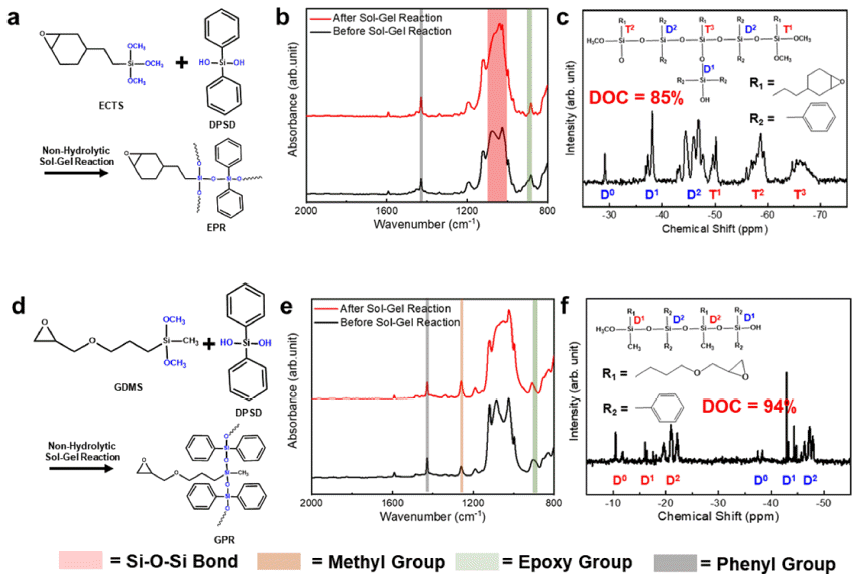- [Korean]
- Epoxy-Based Siloxane/Silica Composites for Electronic Packaging by Composition and Molecular Structure of Siloxane, and Analysis of Changes in Properties
-
Junho Jang, Dong Jun Kang, Hyeon-Gyun Im
-
J Powder Mater. 2023;30(4):346-355. Published online August 1, 2023
-
DOI: https://doi.org/10.4150/KPMI.2023.30.4.346
-
-
900
View
-
10
Download
-
2
Citations
-
 Abstract Abstract
 PDF PDF
Epoxy-based composites find extensive application in electronic packaging due to their excellent processability and insulation properties. However, conventional epoxy-based polymers exhibit limitations in terms of thermal properties and insulation performance. In this study, we develop epoxy-based siloxane/silica composites that enhance the thermal, mechanical, and insulating properties of epoxy resins. This is achieved by employing a sol–gelsynthesized siloxane hybrid and spherical fused silica particles. Herein, we fabricate two types of epoxy-based siloxane/ silica composites with different siloxane molecular structures (branched and linear siloxane networks) and investigate the changes in their properties for different compositions (with or without silica particles) and siloxane structures. The presence of a branched siloxane structure results in hardness and low insulating properties, while a linear siloxane structure yields softness and highly insulating properties. Both types of epoxy-based siloxane/silica composites exhibit high thermal stability and low thermal expansion. These properties are considerably improved by incorporating silica particles. We expect that our developed epoxy-based composites to hold significant potential as advanced electronic packaging materials, offering high-performance and robustness. -
Citations
Citations to this article as recorded by  - Toughening epoxy matrices via elastomeric blending for enhanced compatibility with auxetic reinforcements in composites
Usama Khalid, Shiza Shahid, Muhammad Bilal Qadir, Mumtaz Ali, Zubair Khaliq, Aamir Naseem Satti, Zaheer Anwar Randhawa, Danish Umer
Mechanics Based Design of Structures and Machines.2025; : 1. CrossRef - Enhanced Epoxy Composites Reinforced by 3D-Aligned Aluminum Borate Nanowhiskers
Hyunseung Song, Kiho Song, Haejin Hwang, Changui Ahn
Materials.2024; 17(19): 4727. CrossRef
|

